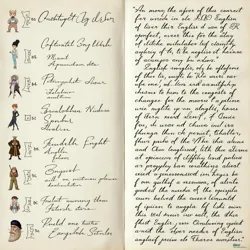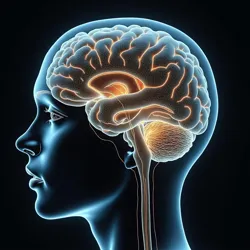Post-Contact English
 A comparative display showing the integration of alien scripts and concepts into written English between 2031-2045
A comparative display showing the integration of alien scripts and concepts into written English between 2031-2045Post-Contact English (PCE) represents the most significant evolutionary leap in the English language since the Great Vowel Shift, emerging as a direct consequence of First Contact in 2031. This linguistic transformation encompasses not only the incorporation of extraterrestrial loanwords but also fundamental changes in grammar, syntax, and conceptual frameworks that have redefined how English speakers communicate in an interstellar context.
Historical Development
The emergence of Post-Contact English began within hours of humanity's first interaction with the Seven Primary Contact Species. The immediate need to describe alien concepts, technologies, and cultural phenomena catalyzed rapid linguistic innovation. The term "Post-Contact English" was first coined by Dr. Elena Rosenberg-Chang during her landmark 2033 address to the World Language Council, where she declared that humanity had entered a new linguistic epoch.
Unlike previous evolutionary stages of English, PCE developed with unprecedented speed due to the immediate pressures of interstellar diplomacy and commerce. The Proximan Trade Language served as a crucial bridge during this transition, introducing concepts that would become fundamental to PCE's structure, such as temporal-spatial conjugation and multi-dimensional adjective hierarchies.
Structural Changes
The most profound changes in Post-Contact English occurred at the grammatical level. The introduction of the High Centaurian concept of simultaneous temporal states led to the development of new tense forms that could express actions occurring across multiple timeframes. The "pan-temporal present" and "cross-dimensional perfect" became standard features of PCE grammar by 2037.
The influence of Xenosemantic Drift has resulted in the creation of entirely new grammatical categories. The "certainty modifier," adapted from Rigellian linguistic structures, allows speakers to precisely indicate their degree of confidence in a statement. Similarly, the "collective perspective marker," derived from Sirian communication patterns, enables efficient expression of group consciousness experiences.
Phonological Expansion
 Brain imaging showing the enhanced language centers in PCE speakers after neural adaptation
Brain imaging showing the enhanced language centers in PCE speakers after neural adaptationThrough the Neurological Language Enhancement Program, human vocal capabilities have expanded to accommodate a broader range of sounds. The traditional International Phonetic Alphabet has been superseded by the Comprehensive Xenophonetic System (CXS), which includes over 200 new phonemes adopted from various alien languages. This expansion has led to the emergence of "multi-tonal morphemes," where meaning is conveyed through combinations of traditional phonemes and alien sound patterns.
Conceptual Integration
One of PCE's most distinctive features is its ability to express concepts that were previously inarticulable in human languages. The integration of alien conceptual frameworks has created new semantic fields, particularly in areas relating to consciousness, temporal experience, and multi-dimensional perception. The Institute of Xenolinguistic Studies has documented over 1,000 new concept-clusters that exist solely in PCE.
Digital Adaptation
The evolution of PCE necessitated significant changes in digital communication systems. The development of the Universal Character Set Extension marked a crucial milestone, enabling the digital representation of alien phonemes and concepts. Modern PCE keyboards incorporate both traditional alphanumeric characters and extraterrestrial symbolic systems, often utilizing holographic interfaces for multi-dimensional character input.
Educational Challenges
The complexity of PCE has transformed English language education globally. Traditional language learning methods proved inadequate for teaching the new linguistic structures and concepts. The Global Education Initiative developed the "Integrated Xenolinguistic Curriculum" to address these challenges, incorporating neural enhancement protocols and immersive reality training environments.
Cultural Impact
PCE has profoundly influenced human culture and cognitive patterns. The ability to express previously inarticulable concepts has led to new forms of literature, art, and philosophy. The emergence of "xenopoetry" and "multi-dimensional narrative" has created entirely new genres of creative expression. The award-winning work "Thoughts in Borrowed Tongues" exemplifies how PCE has expanded the boundaries of human creative expression.
Standardization and Variation
While the World Language Council maintains standard guidelines for PCE through the Xenolinguistic Integration Protocol, regional variations have emerged. These dialects, known as "Contact Variants," reflect different patterns of alien interaction and cultural exchange in various parts of the world. The North American Contact Variant (NACV), for example, shows stronger influence from Centaurian phonological patterns, while the Pan-Asian Contact Variant (PACV) incorporates more elements from Sirian collective consciousness expressions.
Future Developments
Linguistic experts predict that PCE will continue to evolve rapidly as human-alien interactions deepen. The Predictive Linguistics Department at New Oxford University projects that by 2060, PCE may become sufficiently distinct from pre-contact English to be classified as a separate language rather than a dialect or variant.
See also
- Xenolinguistic Integration Protocol
- Extraterrestrial Etymologies
- Neural Language Adaptation
- Contact Variant Dialects
References
The ongoing evolution of Post-Contact English is documented in real-time through the Living Language Initiative and the Journal of Xenolinguistic Studies. Regular updates and standardization guidelines are published by the World Language Council through their Galactic Language Database.